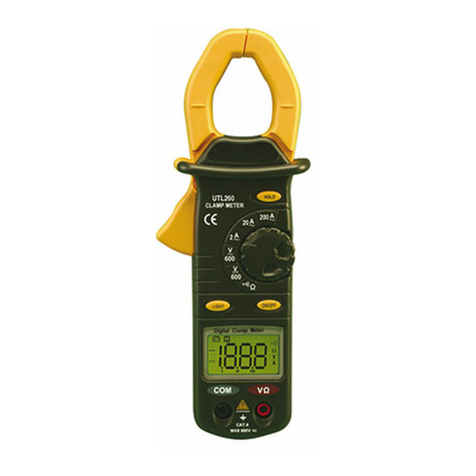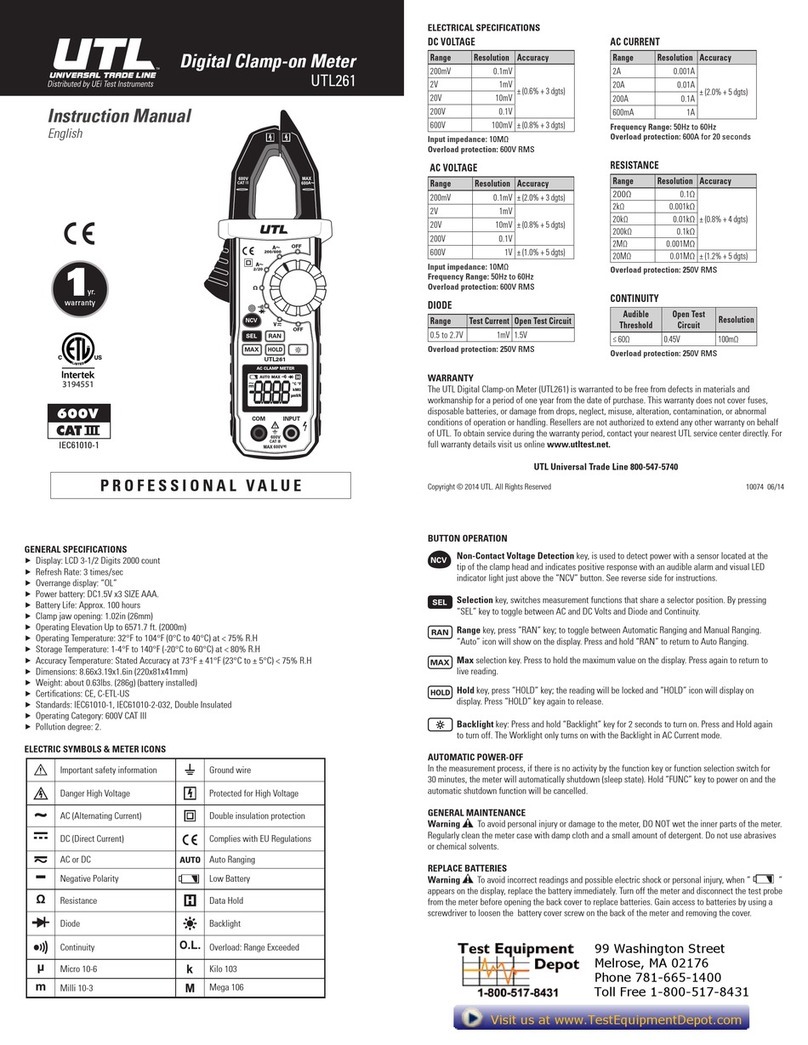
SHENZHEN UTILITY POWER SOURCE CO., LTD
charging finished, put the battery to(55±2)high℃-temperature box
for 2 hours, then discharge it to 2.75V by 1C5A constant current.
leaking, or explosion
Low temperature
discharging performance
At the environmental temperature of ((20±5) ), after quick℃
charging finished, put the battery to(-20±2)low℃-temperature box
for 16-24 hours, then discharge it to 2.75V by 0.2C5A constant
current.
Discharge time
≥180min,no
deforming, leaking, or
explosion
Stability to wet heat
After normal charging finished, put the battery in constant temp
and humidity box with temperature of(40±2),relative humidity of℃
90%-95% for 48 hours. Then put out the battery in the environment
of (20±5)for 2 hours.℃Observe the appearance of the battery,
then discharge it to 2.75V by 1C5A constant current.
Discharge time
≥36min,no deforming,
leaking, or explosion
Vibration
After the battery fully charged, fix it onto the vibration machine, urn
the vibration frequency and amplitude by following: X,Y,Z 3
directions for each directions doing 10Hz~55Hz cycle vibration for
30 minutes, rate of sweep frequency is 1oct/min.
Vibration frequency:10Hz~30Hz Displacement amplitude:0.38mm
Vibration frequency:30Hz~55Hz Displacement amplitude:0.19mm
After the vibration, observe the appearance of the battery, inspect
the battery voltage.
Battery
voltage≥3.7V,no
apparent damage,
leakage, fuming or
explosion
Free fall
After quick charging, put the battery sample on a 650mm high
place then let it freely fall onto a 18mm-20mm thick hard wood
board on concrete floor. From each of X,Y,Z, positive, negative(six
directions) to drop the battery, observe the appearance of the
battery, discharge it to 2.75V by 1C5A constant current. Then by
the way of 1C5A to run no less than 3 charge-discharge circles.
Discharge time
≥51min,no leakage,
or explosion, it can
normally work when
applied into cellular
phone, the catch lock
can normally work.
Bumping test
Respectively according to X,Y,Z three perpendicular axes, fix the
battery on the vibration machine by holder, turn the acceleration
speed by following, doing bumping test during pulse time; pulse
peak acceleration speed:100m/s2,bumping time per minute :40~
80;pulse duration :16ms, Collision times: 650±10
No apparent damage,
leakage, fuming or
explosion. Voltage no
less than 3.6v
7





























